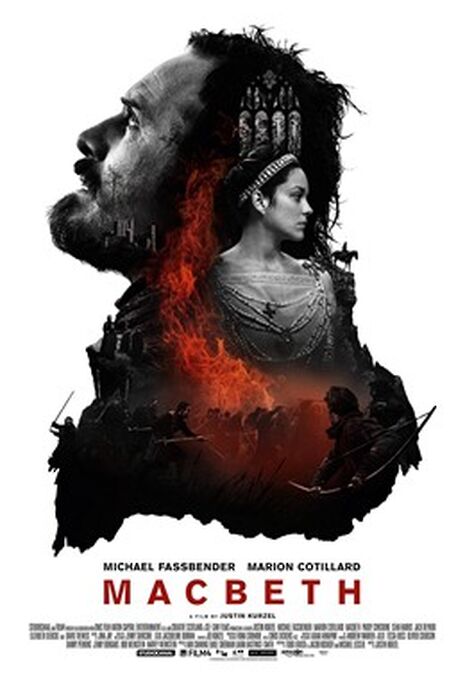Petar on Film: ‘Macbeth’ and the devastating power of grief
Petar Lekarski unpicks the latest releases

I recently saw the new adaptation of Macbeth and it wrecked me in the best way. I’m still trembling with the aftershocks and thinking about its amazing moves. It was freaking intense, dear reader. Why? Because instead of being slavishly devoted to Shakespearean language, it uses the unique communicative power of film to make a universal statement about grief.
Macbeth opens with a heart-breaking scene. It’s not quite up there with the famous prologue of Pixar’s Up, but it comes close. We see Michael Fassbender and Marion Cotillard mourning a dead child, huddling together for warmth. Our instinct is to do the same. The setting is remote and desolate. The atmosphere is one of all-consuming sadness. I should note that I am not familiar with the play, nor have I seen any adaptations, theatrical or otherwise. The film’s strength is that you don’t have to be familiar with the original plot or the language to enjoy it. It works because the central themes of the play are communicated cinematically, through sound and colour, slow motion and repetition.
Sound first. The soundtrack album opens with two sparse, eerie tracks – ‘The Child Part 1’ and ‘The Child Part 2’. The film and its soundtrack both open with an entirely human endeavour: burying the dead. Not with the witches and their scheming; not with the supernatural. The intention, I think, is to put us in the frame of mind of two grieving parents. We are invited to feel what these poor people must be feeling – both visually, through the framing of the scene, and aurally, through an unobtrusive score. Once we’ve accepted this invitation, and thus the film’s premise, its central themes emerge as corollaries. In other words, everything to come can be seen as an expression of grief.
Macbeth is violent. Immediately and brutally. I must qualify that by saying that the violence is not gratuitous – it’s not there because some financiers thought audiences wouldn’t respond to a Shakespearean adaptation without it. It seems instead like a concerted effort to help us to relate to the protagonists. Their world (not unlike that of Max in this summer’s Mad Max: Fury Road) is fire and blood. They have just lost their child. In this context, their homicidal scheming is less easy to dismiss as mere madness or pure evil.
Macbeth is alone. He is often positioned in the centre of the frame or around its edges, away from people, away from us, even when he appears to be looking straight towards the camera. He sees things others don’t – most prominently the three witches. He is a fierce warrior who is easily led astray, whether by Lady Macbeth’s hand or by nebulous supernatural persuasion. This creates a fascinating duality in Macbeth’s character that Fassbender portrays wonderfully – he’s at once incredibly powerful and incredibly vulnerable.
Macbeth’s hamartia is his blind trust in those who walk him to the edge of a cliff and tell him to jump. This is what Lady Macbeth does when she suggests that Macbeth should murder the incumbent king that night. Lo and behold, Macbeth does just that, terrifyingly stabbing a sleeping man. The camera lingers uncomfortably, the murder becoming more lurid and unsettling with each strike. This scene is jarring for all the right reasons. It’s slow and agonising. Director Justin Kurzel’s use of slow-mo to emphasise the thematic importance of certain actions should not be brushed off as ‘showy’ or ‘gimmicky’. It is anything but a gimmick. It gives us room to reflect and allows time to mull over the tragedy. It is uniquely cinematic; like all of Macbeth. Every choice – each frame, each note of the score, each camera movement – is part of a riveting whole. Don’t miss it, dear reader.
 News / Union elections kick off with contested presidential race22 November 2025
News / Union elections kick off with contested presidential race22 November 2025 News / Queens’ for Palestine stages second sit-in23 November 2025
News / Queens’ for Palestine stages second sit-in23 November 2025 News / English students fury at note sheet ban for exams21 November 2025
News / English students fury at note sheet ban for exams21 November 2025 News / Protesters call on university staff to support strike action21 November 2025
News / Protesters call on university staff to support strike action21 November 2025 Comment / Don’t get lost in the Bermuda Triangle of job hunting 24 November 2025
Comment / Don’t get lost in the Bermuda Triangle of job hunting 24 November 2025








